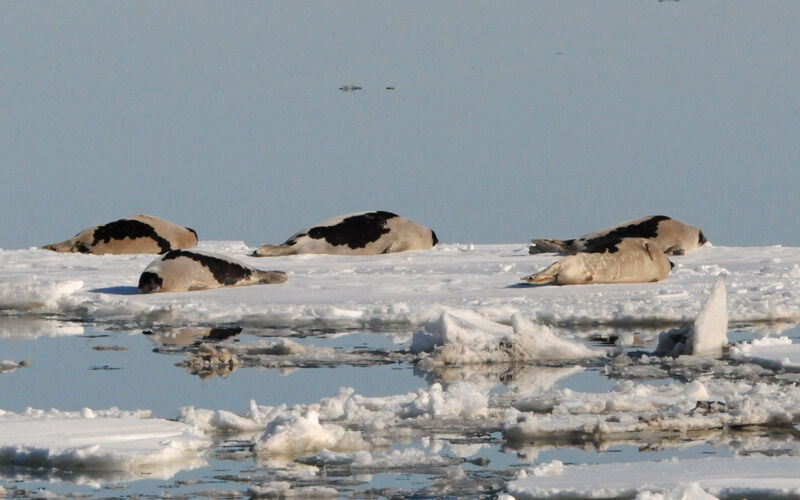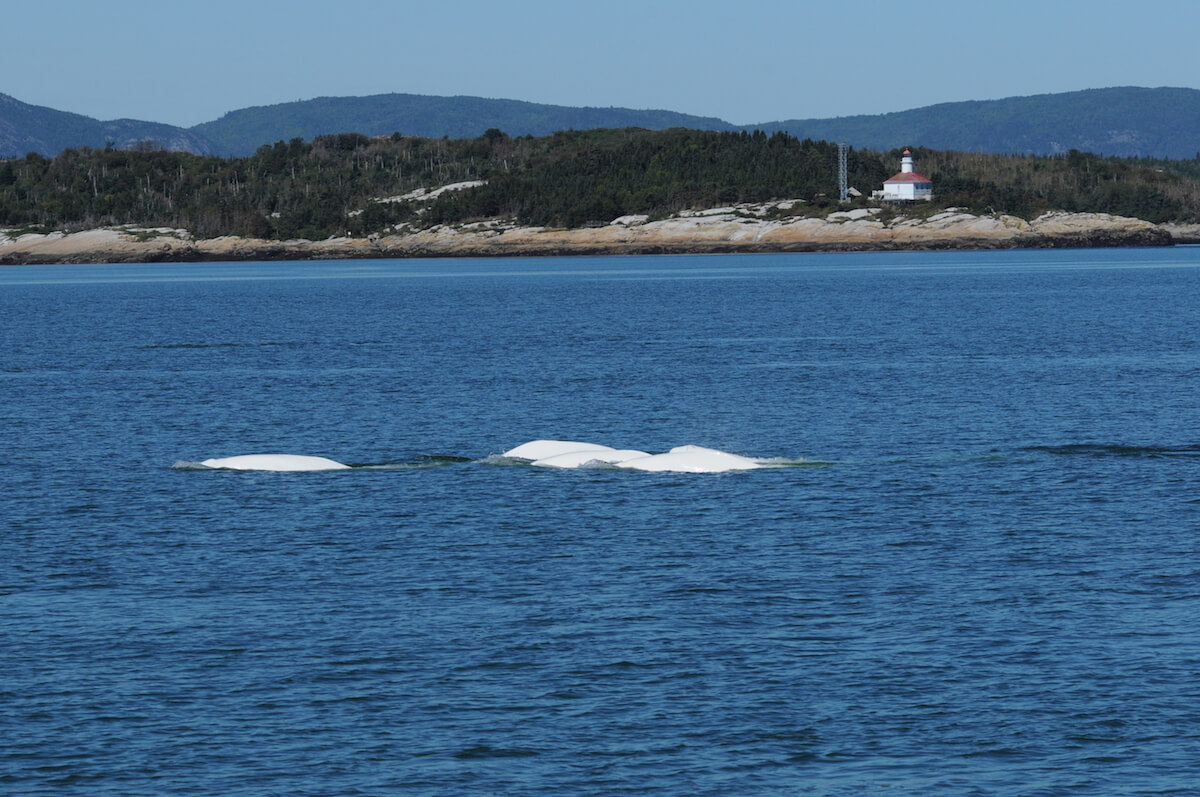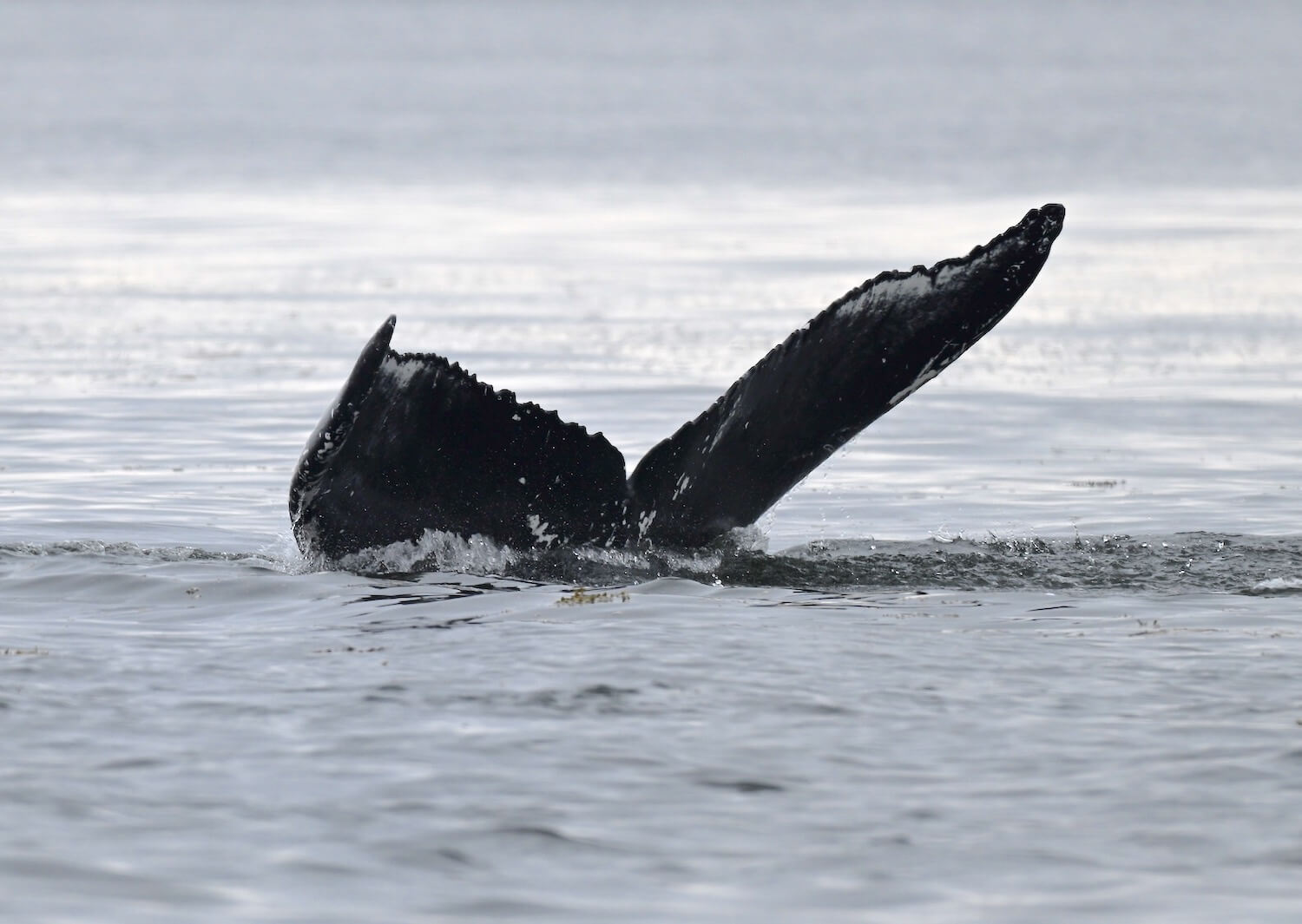A herd of harp seals is enjoying a break in the ice cover off the docks in Les Escoumins. The group numbers 50 to 60 individuals. This gregarious species visits the waters of the St. Lawrence in winter. It is believed to be the most abundant seal species in the Northern Hemisphere.
Within the next few weeks, pregnant harp seals should be starting to give birth. The pupping season runs from February to March. In order for females to nurse and their young to gain strength, the pack ice must be solid. In this context, harp seals gather to give birth on ice off the coasts of the Magdalen Islands.
Nursing in harp seals lasts 12 days. At birth, the newborn has a yellowish coat known as lanugo and weighs about 10 kg. It will then grow 2 or 3 kg per day. As for the mother, she loses weight, but not quite as quickly as her young grows fatter, due to the fact that she must occasionally leave the pack ice to hunt. After 5 to 10 days, the pup has developed a layer of fat and a fluffy white “coat”. After 12 days, the mother leaves her offspring permanently to concentrate on mating again.
Family relationships are rather short for seals. The record for the shortest relationship belongs to the hooded seal, where the mother nurses her offspring for just 4 days. It is the high fat content in her milk that allows her young to double its weight in such a short time span. This milk is enough to make our own 1% milk seem watered down: it contains 60% fats!
In the Sept-Îles area, not far from the Brochu River where it empties into the St. Lawrence, a harbour seal pokes its head above the surface about 100 metres from shore. The head of the harbour seal resembles that of a dog, whereas it is said that gray seals have horse-like heads. Harbour seals are seen alone more often than gray seals or harp seals.
A few seals are also seen in the Gaspé Peninsula, especially near the aptly-named Seal Cove or Anse aux Loups Marins near Douglastown. Another seal is observed drifting on a block of ice off Percé. Far from being in danger, the animal is taking advantage of this floating surface to rest.





